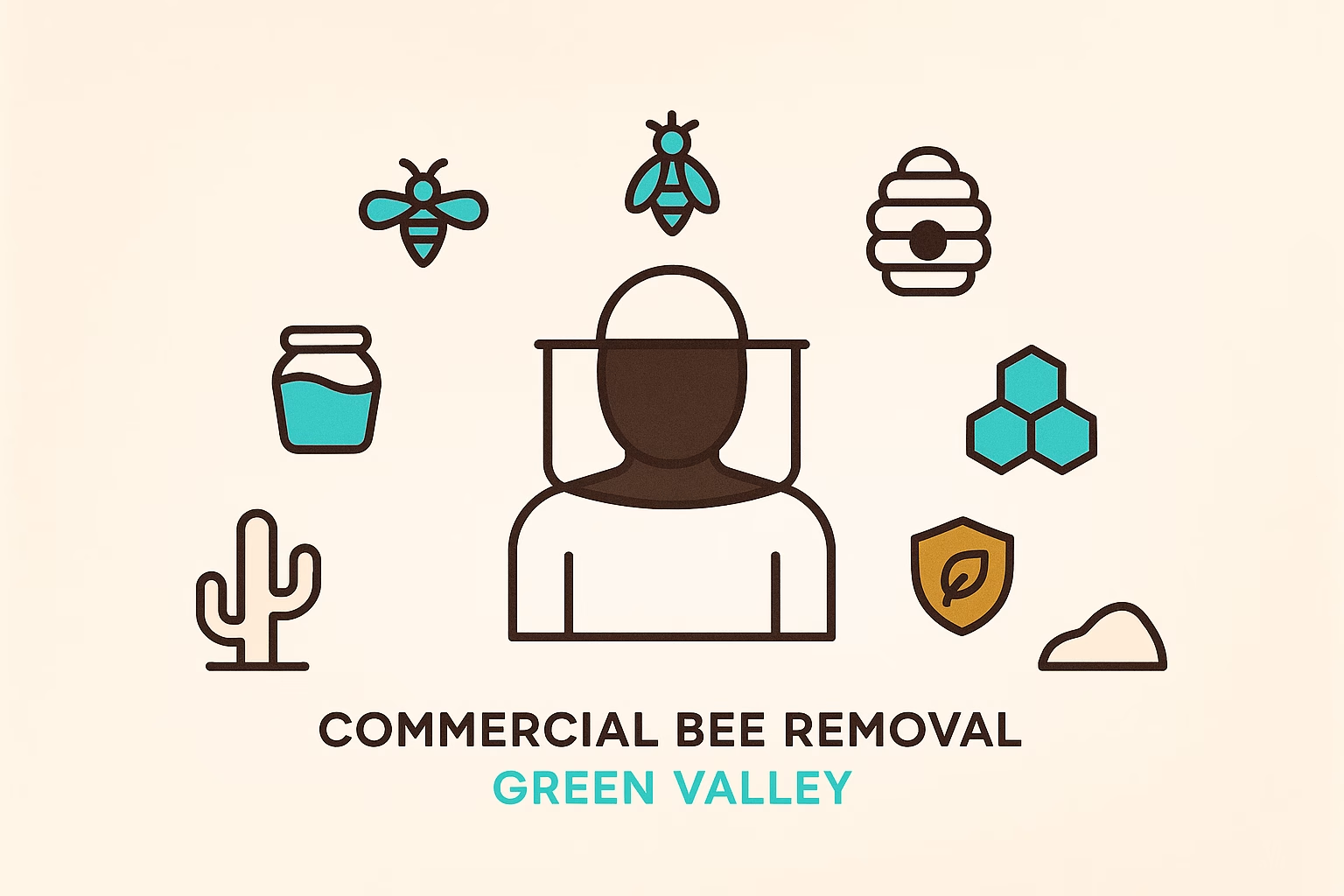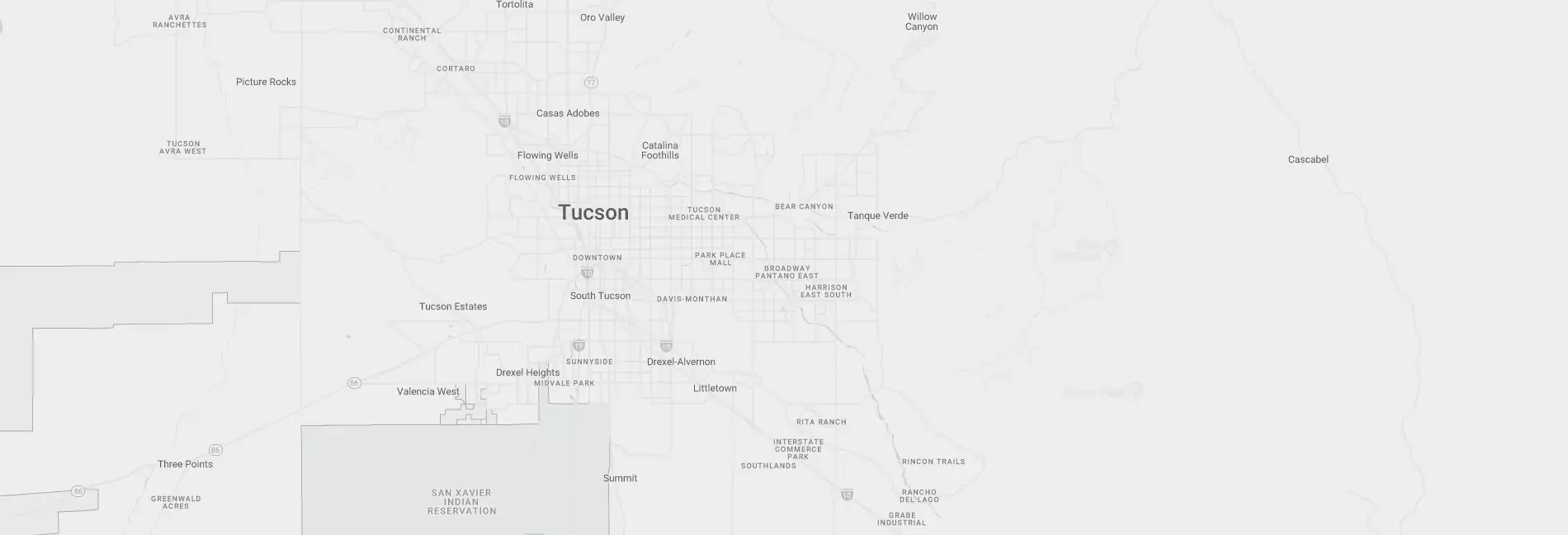Introduction: Safe Bee Removal for Green Valley Schools, Parks, and Community Spaces
Busy campuses, playgrounds, and trailheads should be safe, fun places for kids and families. Yet in Southern Arizona, seasonal swarms and hidden hives are a reality. In Green Valley, bees frequently move into gaps in structures, irrigation vaults, and trees—often right where people gather.
The problem: Without a clear plan, schools, HOAs, and municipalities face safety risks, liability exposure, and service delays when bees nest near people.
The solution: A proactive program that blends policy, prevention, and rapid commercial bee removal Green Valley partnerships. With prepared protocols and a vetted provider, you can protect people while preserving pollinators through safe bee removal and relocation whenever feasible.
Why commercial bee removal Green Valley matters for public sites
The local risk landscape: Africanized honey bees and high-use areas
Our desert-adapted bees—including Africanized honey bees—can be more defensive around nest sites. That matters near high-use areas like playfields, shaded seating, and trailheads, where curious children, pets, or lawn equipment can accidentally trigger a defensive response.
- Know the difference between a transient swarm (often harmless, resting briefly) and an established hive (defensive around the nest).
- Set distance and closure protocols for suspected colonies near walkways, concessions, or playgrounds.
For region-specific guidance, see the Saguaro National Park guidance on Africanized honey bees. For first aid and incident thresholds, follow Pima County Health’s Bites & Stings recommendations.
Where colonies hide around schools, parks, and community centers
In Green Valley’s built environments, colonies commonly occupy:
- Utility boxes, irrigation vaults, and meter bases
- Block walls, bleachers, roofs, and soffits
- Playground equipment, storage sheds, and hollow trees
Use seasonal patterns to guide inspections and staffing. For local activity insights and Green Valley AZ bee control tips, see our Learn About Bees resource.
Compliance and liability essentials for HOAs, districts, and municipalities
Vetting vendors: licensing, insurance, and scope
Public sites must use properly licensed providers. In Arizona, verify your vendor’s certified/qualified applicator credentials and active general liability and workers’ comp coverage. Ensure the scope of work includes structural hive removal, swarm capture, and bee-proofing with written warranties.
Review state guidance via the Arizona Department of Agriculture Pest Management FAQs.
School-specific rules: notification and who may apply products
Schools must coordinate stinging-insect responses with campus notification protocols and designated, licensed contractors. Ensure your bee removal for schools plan aligns with notification timelines and restrictions on who may apply products on school property.
Humane Bee Removal & Relocation
Need Safe, Ethical Bee Removal in Tucson?
Seeing a swarm or bees entering a structure? Call now to speak with a Tucson beekeeper for fast, humane bee removal and professional guidance.
Call (520) 300-7233Overview and context: UA Community IPM on school notification rules (ARS 15-152).
Jurisdiction and reporting around facilities and parks
Clarify responsibility for city vs. private/HOA property and how to report hazards near shared boundaries. Document your escalation flow and who closes/open areas.
Reference: City of Tucson—Report Bees/Pests on Private Property.
School-ready protocols: bee removal for schools and IPM integration
Build an actionable School IPM plan with roles and response steps
Create a plan that spells out who does what, when. A clear, practiced approach eliminates confusion and shortens response times.
- Reporting flow: Teacher/staff → School admin → Facilities/Risk → Contracted vendor
- Cordon procedures: Establish 100–300 feet standoff distance, deploy cones/tape/signage, and designate a spotter
- Communication templates: Parent/guardian notices, staff updates, and site maps for vendors
- Post-incident reviews: Debrief within 48 hours to update procedures and training
Start here: UA Cooperative Extension—Preparing Your School IPM Plan.
Align with campus safety best practices for stinging insects
Integrate prevention, response, and recovery into your safety drills. Key steps include routine monitoring, bee‑proofing small openings, and pre-approved criteria for when to relocate vs. remove.
Evidence-based checklist: USDA Carl Hayden Bee Research Center—Safety Precautions for Schools.
Parks and recreation playbook for safe bee removal
Public spaces bee safety and operations
Parks crews must rapidly distinguish swarms from established colonies and safely divert visitors while waiting for commercial bee removal Green Valley response.
- Train recognition: Swarm clusters on trees vs. colonies entering/exiting a structure
- Set standoff distances: 100–300 feet minimum; more if wind or crowds increase risk
- Reroute foot traffic: Post directional signage and update digital alerts when possible
Practical guidance: USDA—Bee Safety for Parks and Outdoor Areas.
First aid, documentation, and reopening criteria
Standardize first-aid steps and the trigger points for EMS. Track each incident to improve prevention and support liability defense.
- First aid: Move to safety, remove stingers with a scraping motion, apply cold compress, monitor for allergic reactions
- EMS thresholds: Multiple stings, known allergies, or any signs of anaphylaxis
- Reopening criteria: Vendor confirms hive removal or swarm departure, site sanitized, and bee-proofing completed
Use local standards: Pima County Health—Bites & Stings.
Selecting a partner for commercial bee removal Green Valley
What to look for in a service agreement
- Arizona licensing: Current certified/qualified applicator credentials
- Insurance: Additional insured certificates for your district/HOA/municipality
- Response SLAs: Same-day dispatch, after-hours callouts, and defined arrival windows
- Public site expertise: Demonstrated experience with bee removal for schools, parks, HOAs, and community centers
- Safe bee removal: Humane relocation when feasible; transparent criteria for when extermination is necessary
- Written warranty: Coverage for re-infestation and a clear prevention/bee-proofing plan
- Documentation: Incident logs, photos, and service reports suitable for liability defense
Humane Bee Removal & Relocation
Need Safe, Ethical Bee Removal in Tucson?
Seeing a swarm or bees entering a structure? Call now to speak with a Tucson beekeeper for fast, humane bee removal and professional guidance.
Call (520) 300-7233Local capabilities and rapid-response options
For Green Valley organizations seeking a local partner:
- Green Valley service coverage and rapid-response options
- Structural hive removal, swarm capture, and bee-proofing service menu
- Safety procedures, prep checklists, and relocation vs. extermination FAQs
Prevention and Green Valley AZ bee control for facilities
Bee-proofing buildings and grounds
Prevent the problem before it starts. Prioritize sealing, screening, and sanitation after any removal.
- Seal utility penetrations, soffits, and expansion joints with appropriate materials
- Screen vents with 1/8-inch mesh where ventilation allows
- Maintain sheds, bleachers, eaves, and fascia—repair gaps larger than 1/8 inch
- After removals, sanitize honey/comb residues to prevent re-colonization
Get seasonal prevention tips and behavior insights: Learn About Bees.
Landscaping and operations best practices
- Fix irrigation leaks and remove standing water near play or seating areas
- Reduce sheltered voids (e.g., cap fence posts, close wall cavities, manage storage clutter)
- Schedule pre-season inspections in late winter; establish a spring swarm watch
- Plan equipment routes so mowers and blowers avoid known colony sites until cleared
Planning, scheduling, and budgeting for public sites
Seasonal calendar and staffing
Spring swarm season demands faster response windows and refreshed staff training. By late winter, lock in vendor SLAs, conduct campus walk-throughs, and confirm contact trees and after-hours roles.
Local seasonality context for HOAs and parks: Green Valley bee activity overview.
Cost control and contract structure
- Bundle services: Inspection + removal + bee-proofing to reduce repeat callouts
- Tiered response: Priority dispatch windows for schools and high-traffic parks
- Volume pricing: Multi-site or district-wide contracts to stabilize budgets
- Standardize documentation: Include incident reporting templates and photo logs
Quick-response checklist: bee removal for schools, parks, and community spaces
Immediate actions when a swarm or hive is found
- Cordon 100–300 feet, post clear signage, and assign a trained spotter
- Notify facilities/risk management and your contracted provider for commercial bee removal Green Valley
- Relocate activities indoors or to alternate sites; avoid mowers/blowers near the area
- Do not spray, seal, or disturb the site before professionals arrive
Documentation and communication
- Log time, exact location, bee behavior, stings (if any), and photos
- Initiate family/resident notifications for school grounds per policy
- Confirm closure and reopening criteria with your vendor
- Retain service reports and cleanup records for liability defense and hotspot tracking
Conclusion: Creating safe spaces for kids with safe bee removal
Key takeaways: Proactive IPM planning, compliant vendors, and fast, humane responses reduce risk and liability while protecting pollinators. With the right partner, safe bee removal and relocation fit seamlessly into your safety program.
Next step: Coordinate a site assessment and readiness plan with a licensed team focused on commercial bee removal Green Valley and community safety. Contact us to get started: Tucson Bee Removal—Humane, Eco-Friendly Control.





